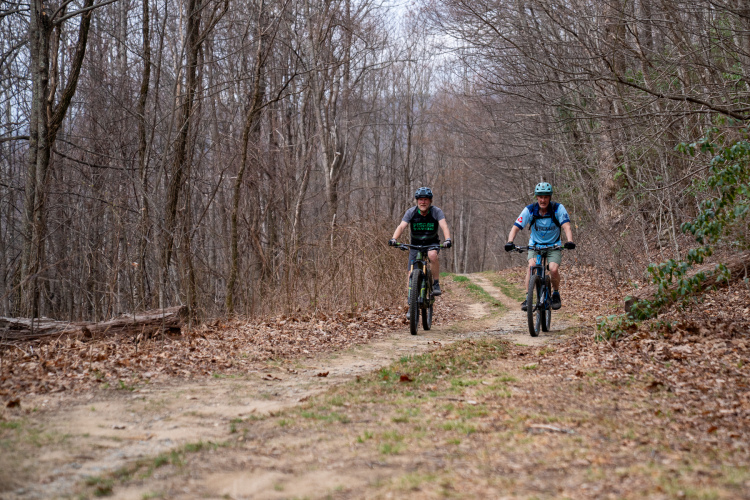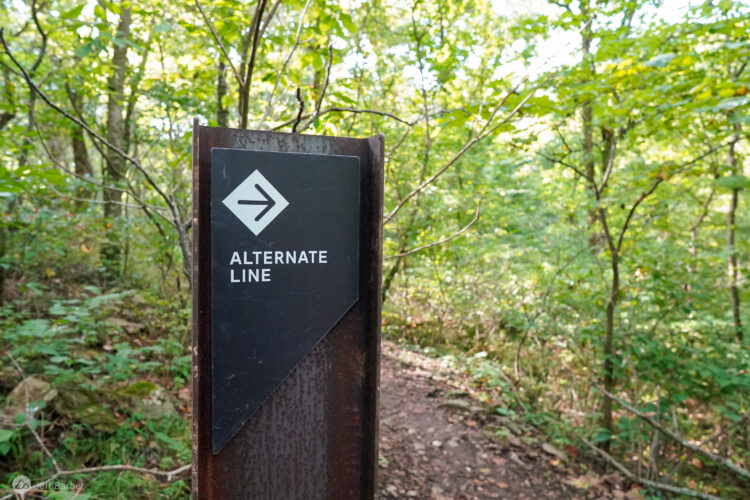
Over the past several years there’s been a lot of talk about longer, lower, slacker geometry and how that affects reach, bottom bracket heights, and head and seat tube angles. Stack height discussions, on the other hands, don’t tend to get much air time.
“In my experience, stack height is seldom the first number that any designer would start to look at,” said Alastair Beckett of Redburn Designs. “That doesn’t mean it isn’t important.”
A low stack height places more of the rider’s weight on the front wheel for descents while a high stack height can cause the front end to wander on the climbs. Not only that, stack height feeds into handlebar height which can have a tremendous impact on comfort.
Over the past few years buyers have been pursuing longer reaches by any means necessary, in some cases going so far as to size up from medium to large, or large to extra large just for the reach. A few brands have taken note, dropping traditional small, medium, and large size designations in favor of more open-ended ranges. And while effective stack height can be increased to a degree through steerer spacers and riser bars, there’s more of a hard limit on going lower. For these reasons, some frame designers appear to be choosing to err on the side of lower stack heights.
“There are some of these extra large bikes that are really long […] but the stack value does not rise in keeping with the amount of reach,” said Specialized Retül bike fitter Jason Williams.
What is stack height?

Put simply, the stack height is the vertical distance from the bottom bracket to the top of the head tube. Beckett explains that a bike’s stack height is influenced by a number of factors including the bottom bracket drop, fork offset and axle-to-crown length, and headtube length. For example, dropping the bottom bracket to make a bike lower also increases its stack height.
Stack height is difficult to eyeball when comparing frames, though looking at a bike’s saddle-to-bar drop can offer a clue. That’s the effective vertical distance from the top of the saddle to the grips, and depending on the bike and the rider it can be either positive (seat higher than the grips) or negative (seat height below the grips).
How stack height affects MTB handling and comfort
Stack height tends to come into play in terms of a rider’s weight distribution. “A lower stack height, in theory, allows the rider to get more weight forward which should keep their center of gravity in a neutral position if the bike is pointed uphill,” said Beckett. “The opposite can be said about a [taller] stack height and descending, where the rider wants to keep their center of gravity toward the rear.”
Stack height affects technical trail riding too, where a too-high stack height can be a negative. “Climbing over rock gardens and getting over a log you just have such a big, or tall front end for a petite rider,” said Williams.
On the other hand, tall riders may experience discomfort with a stack height that’s too low.
“If the front end is too low, and you’re really front heavy, essentially you’re planking the whole time,” he says. “That would pan out either like neck pain […] or even like upper back and neck pain, or between the shoulder blades.” I’ve certainly experienced this sort of pain myself as a tall rider on bikes with comparatively low stack heights.
As usual, the geometry conversation comes down to tradeoffs. Increasing a bike’s stack height improves descending but makes climbing worse and makes it harder to fit short riders. Decrease the stack height and you get a bike that climbs better, descends worse, and isn’t a good fit for tall riders. Fitting shorter or taller riders suggests a proportional approach, based on frame size, is best, but it’s not that simple.
“Designers need to consider weight distribution for a rider [standing] up attacking a trail, as well as their seated climbing position,” said Beckett. “This is probably why we see such a wide variation between brands and models in stack height, and often why customers get confused about sizing.”
Then, there are also practical engineering considerations when it comes to stack height. “There may be a temptation to have a really short head tube in order to keep the stack height down and in proportion to the rider’s body, then you could potentially end up with a real challenge to have enough surface area for your top tube and downtube to attach,” said Beckett. A too short headtube could “lead to a front triangle that is so stiff that it can actually be less reliable than a larger frame which has room to flex and absorb the energy and rider inputs.”
How to adjust stack height for a given frame

Shorter riders and those who are sizing up may find their stack height is too high, while taller folks might find their stack height is too low. The question is, how do you make a change for a given bike? There are two main adjustments that riders can make, though it’s important to note there are potentially unintended side effects.
For riders who want a higher stack height, stem spacers are usually the easiest place to start. If your fork’s steerer tube hasn’t been totally chopped down you can add spacers between the top of the head tube and the stem to elevate the bars. Keep in mind that this also decreases the bike’s reach, which can be a deal breaker for some riders.
“If you’ve got really slacked out front end geometry, it’s making that reach shortening even more pronounced,” Williams notes.
A longer stem can push the reach back out, though the shorter stem lengths that are available today can be limiting. A longer stem affects steering leverage as well, and can even make a bike look dated once it gets beyond 50 or 60mm long. Worrying about how the bike looks may seem trite compared to fit and performance, but both Beckett and Williams mentioned aesthetics as an important consideration.
Another way to push the effective stack height up is to switch the handlebar to one with a higher rise. Riser bars tend to be associated with gravity bikes, and that makes sense given the advantage of raising a bike’s effective stack height to balance weight behind the front wheel on the descents.

Riders hoping to reduce effective stack height face a hard limit at the head tube, though most builds still offer some room for improvement. Removing spacers between the stem and headset brings the front end down, while also increasing the reach. Another option for riders seeking a lower stack height may be to switch to a completely flat, no-rise bar.
Williams, the bike fitter, says the stack height on most bikes can be adjusted up 25-35mm, or down 15-25mm depending on the model and build. Any more than that, and buyers should consider going to a different frame size or choosing a different model entirely.
As with a lot of things, Beckett, the frame designer said stack height comes down to rider preference rather than an ideal number, and while it’s not the first frame measurement most of us consider, it does have a noticeable effect.
“One frame with the same reach as another may have a totally different feel if their stack heights are different.”








13 Comments
Nov 16, 2022
The only thing you didn't mention in the article as it pertains to reach is bar backsweep. It can actually have a pretty dramatic effect on reach as it ranges between 7 and 12 deg, depending on make/model.
Nov 18, 2022
Nov 17, 2022
Nov 17, 2022
Nov 16, 2022
Nov 16, 2022
Dec 22, 2022
So that extra travel is the origin of the spacerless stem these days, and why its better to keep it low for upwards customization later...
Nov 16, 2022
That’s just me though and as you concluded, it’s 100% personal preference
Nov 20, 2022
Like mentioned, subjective as tire pressure and saddle choice.
Nov 16, 2022
Nov 16, 2022
Nov 17, 2022
Nov 17, 2022